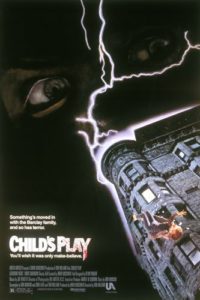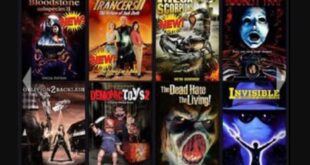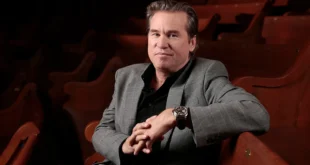The horror nerd knows the unique pain and pleasure that comes with putting two movies together for a truly killer double feature – the kind of exciting combination that makes the entire viewing experience a new, sublime cinematic journey and makes each movie stand out as exceptional against the other. Being successful at this is a skill. It’s a trained and studied skill with as much scholarship and monastic obsession behind it as pairing a wine with a cheese, a coffee with a creamer, or a beer with a dinner date. The double feature comes to us from the almost extinct drive-in movie theater, and I honor that legacy with this article. I’m here to give you an entire week’s worth of pairings, a whole seven day of compelling, exciting, thoughtful double features. Let’s get started!
Sunday: Rosemary’s Baby (1968) & Child’s Play (1988)


I know, right out of the gate I sound insane. Trust me, though. A proper double feature is all about finding the connective tissue between films. Sometimes, that tissue is about commonalities and shared themes, but sometimes it’s about the singular, sharpened differences between the films. Roman Polanski’s dread-filled and eerie film, Rosemary’s Baby, is about a young New York couple, Rosemary (Mia Farrow) and Guy (John Cassavetes), as they move into a luxurious apartment with high society neighbors. The film centers itself around Rosemary and a woman’s struggle with conservatism, 1960s patriarchy, and attempts at modern motherhood in a society that dismisses her as insane when she protests their wishes, as they use her whenever and in whatever way they can. It’s a film about mood, wealth, paranoia, and the dangers of small things. However, as celebrated and wondrous a movie as Rosemary’s Baby is, it’s a heavy movie. Polanski digs a portal to Hell, and he digs it with a silver spoon.
Tom Holland’s Child’s Play, on the other hand, is about poor, single mother Karen (Catherine Hicks) and her young son, Andy (Alex Vincent). Both films revolve around dynamic, powerful performances from women and the pressures of motherhood in New York City. Both are iconic but for very different reasons. Polanski slowly heats his film up into an eventual searing white hot paranoia and Holland builds a playful Hitchcock-like environment of suspense. The films’ differences make for a fun and fascinating night at the cinema… or the dimly lit living room. And what better way to end a Sunday than with a good ol’ fashioned satanic double whammy?
 PopHorror Let's Get Scared
PopHorror Let's Get Scared



